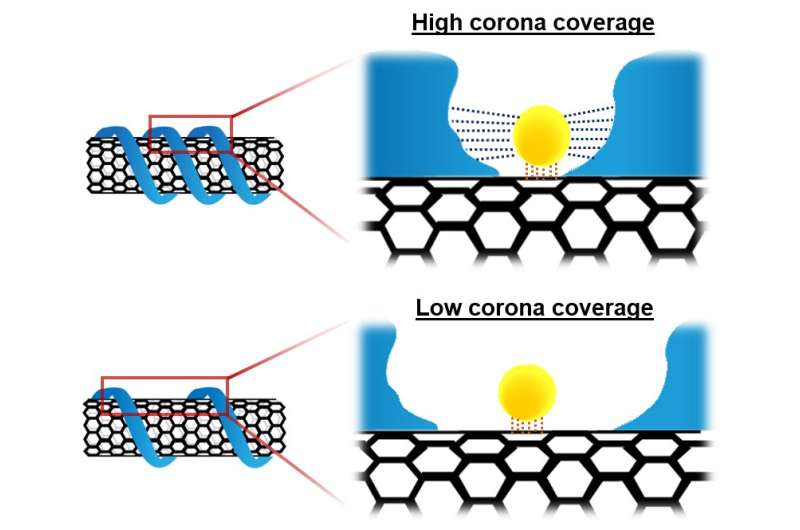SMART discovers breakthrough way to look at the surface of nanoparticles, accelerating nano-engineering of materials

Researchers from SMART, MIT's research enterprise in Singapore, have made a groundbreaking discovery that allows scientists to "look" at the surface density of dispersed nanoparticles. This revolutionary technique enables researchers to characterize' or understand the properties of nanoparticles without disturbing the nanoparticle, and also at a much lower cost and far quicker too.
The new process is explained in a paper titled "Measuring the Accessible Surface Area within the Nanoparticle Corona using Molecular Probe Adsorption," published this month in the journal Nano Letters. It was led by Michael Strano, co-lead principal investigator of DiSTAP and Carbon P. Dubbs Professor at MIT, and Minkyung Park, Graduate Student at MIT. DiSTAP, the Disruptive & Sustainable Technologies for Agricultural Precision Interdisciplinary Research Group (IRG) is a part of the Singapore-MIT Alliance for Research and Technology (SMART), MIT's research enterprise in Singapore. DiSTAP IRG develops new technologies to enable Singapore, a city-state which is dependent upon imported food and produce, to improve its agriculture yield to reduce external dependencies.
The MPA method is based on a noninvasive adsorption of fluorescent probe on the surface of colloidal nanoparticles in an aqueous phase. Researchers are able to calculate the surface coverage of dispersants on the nanoparticle surface—which are used to make it stable at room temperature—by the physical interaction between the probe and nanoparticle surface.
"We can now characterize the surface of the nanoparticle through its adsorption of the fluorescent probe. This allows us to understand the surface of the nanoparticle without damaging it, which is, unfortunately, the case with chemical processes widely used today," said Park. "This new method also uses machines that are readily available in labs today, opening up a new easy method for the scientific community to develop nanoparticles that can help revolutionize different sectors and disciplines."
The MPA method is also able to characterize a nanoparticle within minutes compared to several hours that the best chemical methods require today. Because it uses only fluorescent light, it is also substantially cheaper.
DiSTAP has started to use this method for nanoparticle sensors in plants and nanocarriers for delivery of molecular cargo into plants.
"We are already using the new MPA method within DiSTAP to aid us in creating sensors and nanocarriers for plants," said Strano. "It has enabled us to discover and optimize more sensitive sensors, and understand the surface chemistry, which in turn allows for greater precision when monitoring plants. With higher quality data and insight into plant biochemistry, we can ultimately provide optimal nutrient levels or beneficial hormones for healthier plants and higher yields."
More information: Minkyung Park et al. Measuring the Accessible Surface Area within the Nanoparticle Corona Using Molecular Probe Adsorption, Nano Letters (2019). DOI: 10.1021/acs.nanolett.9b02647
Journal information: Nano Letters




















